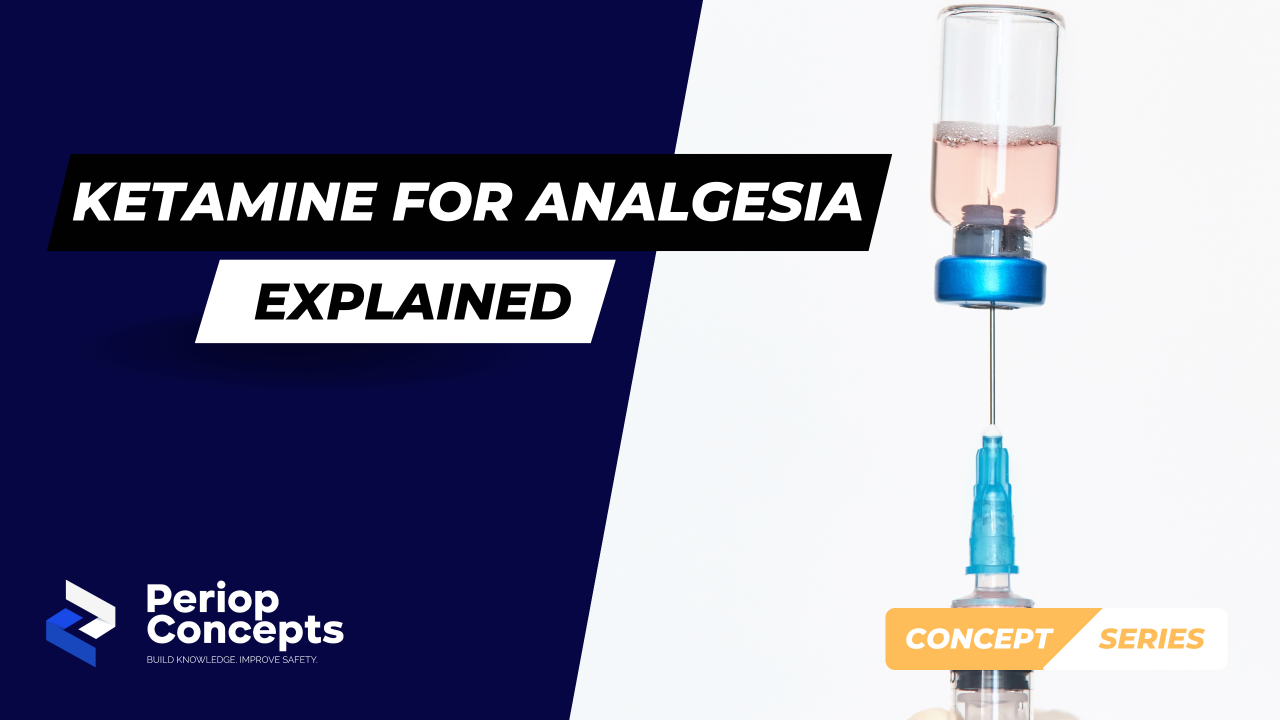Ketamine for Analgesia
Mar 07, 2025
The K hole - Ketamine for analgesia
Ketamine is a prime example of “it’s not the drug, it’s the dose!”
At higher doses, Ketamine is utilised as an anaesthetic agent due to its dissociative effects, but at lower doses, it provides analgesic effect and is useful to help reduce opioid consumption.
So how exactly does Ketamine work, and when would we use it?
💊 Ketamine is a noncompetitive NMDA receptor antagonist
🧠 N-methyl-D-aspartate (NMDA) is a receptor for glutamate - an excitatory neurotransmitter that is heavily involved in pain
🧠 NMDA receptor is also involved in learning, memory and synaptic plasticity
🔥 In terms of pain, it is involved in the amplification of pain signals, the development of central sensitisation and opioid tolerance
The use of Ketamine can be thought of as attempting to hit the “sleep” mode button on one of the main receptors involved in pain. There are many scenarios and patient groups where this can be particularly helpful:
😖 Patients experiencing ongoing severe acute pain despite opioids
🛏️ Patients that are anticipated to have severe post operative pain where analgesia requirements are likely to be high
🏥 Patients with chronic pain that are undergoing surgery anticipated to be moderately-severely painful post operatively
💪 Patients undergoing surgery who are opioid tolerant
⚠️ Patients who have allergies or severe reactions/sensitivities to opioids
Ketamine infusion dosing for analgesia is weight based, typically 0.1-0.2mg/kg and charted as an infusion range to be titrated to effect.
As with all drugs, there are some side effects and contraindications to be aware of in the use of Ketamine. One of the most common side effects is hallucinations, delirium, vivid dreams and/or excitation. If a patient is receiving a Ketamine infusion and experiencing these symptoms, it is advisable to reduce the rate of the infusion rather than ceasing it all together, as these side effects are often dose dependent.
Other considerations or contraindications for the use of Ketamine include:
🏥 It is predominantly metabolised by the liver, therefore caution and close monitoring of LFTs should be taken in patients experiencing liver derangement.
❤️ The effects of Ketamine can increase cardiac output, cause tachycardia and increase blood pressure. Caution should be taken in patients with ischaemic heart disease or raised intracranial pressures.
💊 Methadone also works on the NMDA receptor, so these patients may not feel as much benefit with Ketamine and are also more likely to experience negative side effects.
Build Knowledge✅
Improve Safety✅
References:
Anirudda Pai, Mark Heining, Ketamine, Continuing Education in Anaesthesia Critical Care & Pain, Volume 7, Issue 2, April 2007, Pages 59–63, https://doi.org/10.1093/bjaceaccp/mkm008
Gales, A., Maxwell, S. (2018). Ketamine: recent evidence and current uses. WFSA. https://resources.wfsahq.org/atotw/ketamine-recent-evidence-and-current-uses/
Stay connected with news and updates!
Join our mailing list to receive the latest news and updates from our team.
Don't worry, your information will not be shared.
We hate SPAM. We will never sell your information, for any reason.



